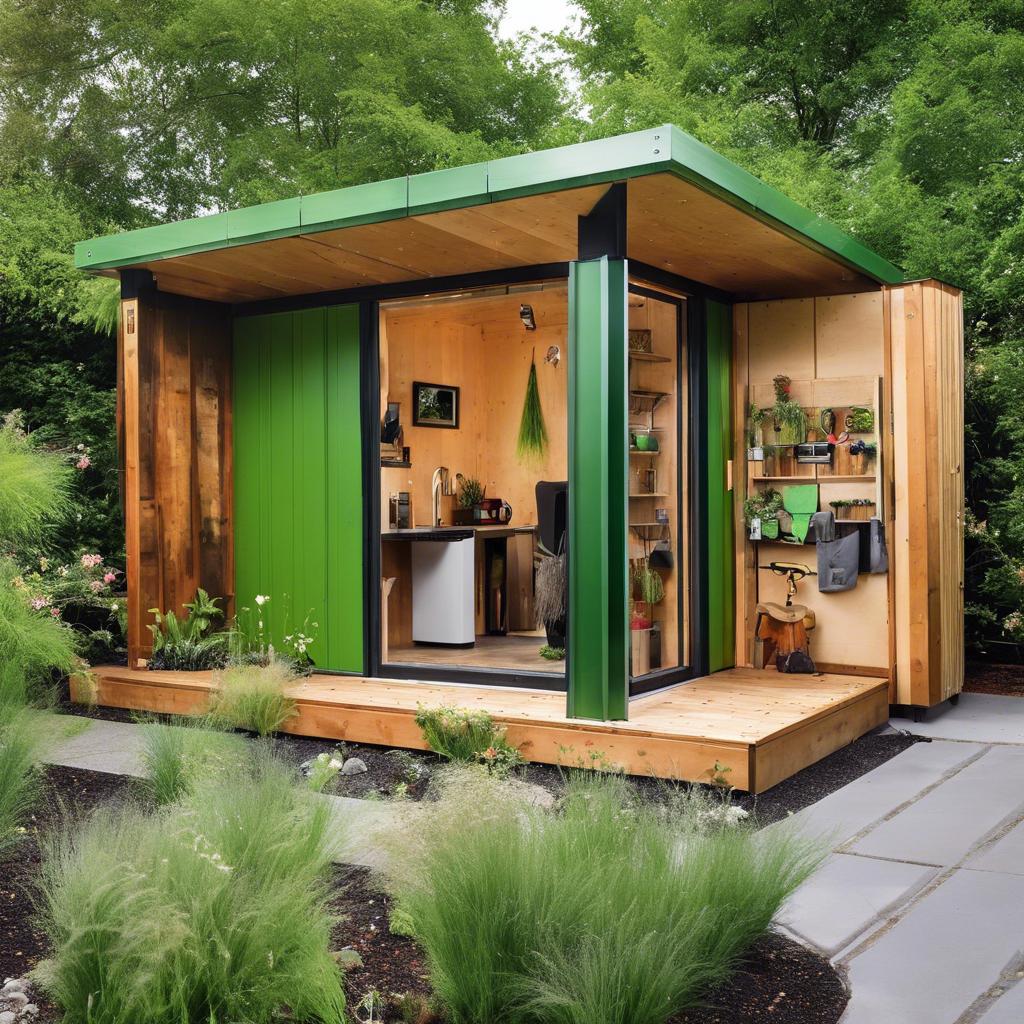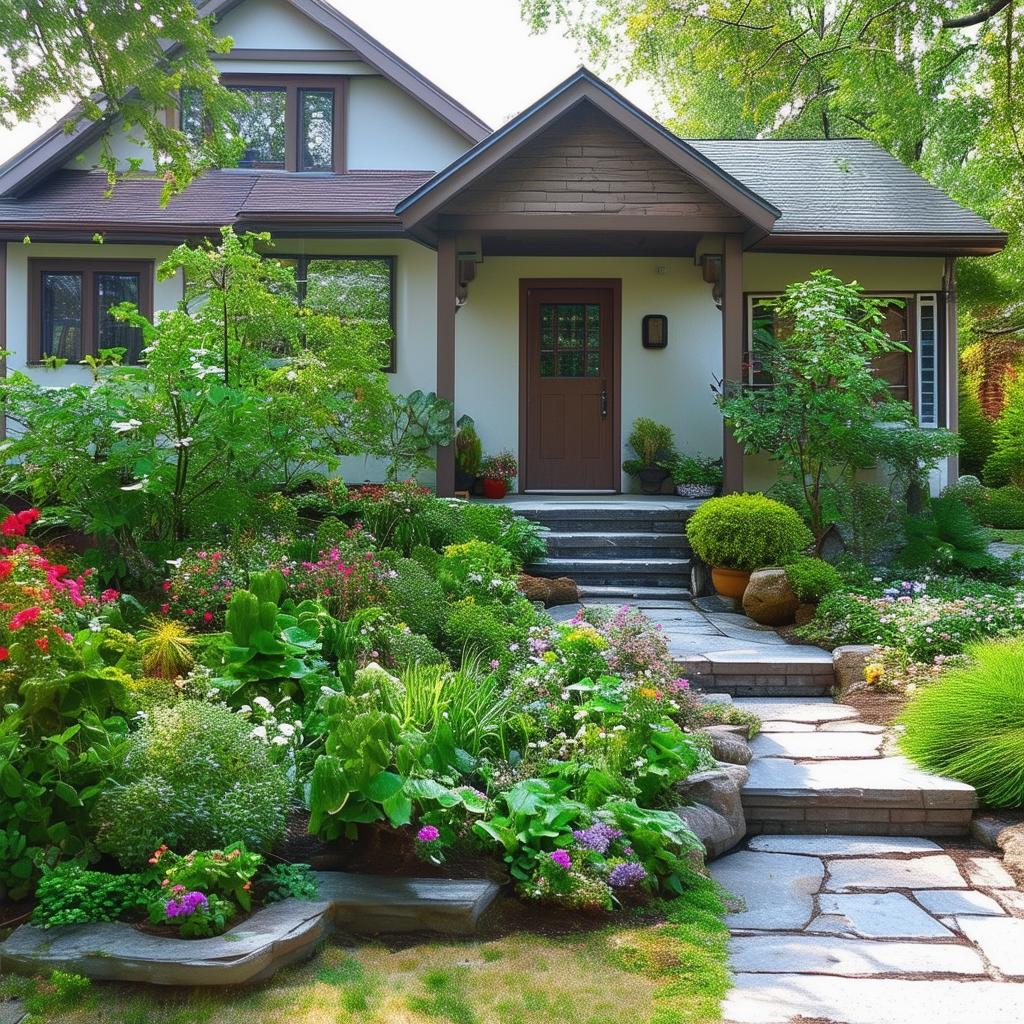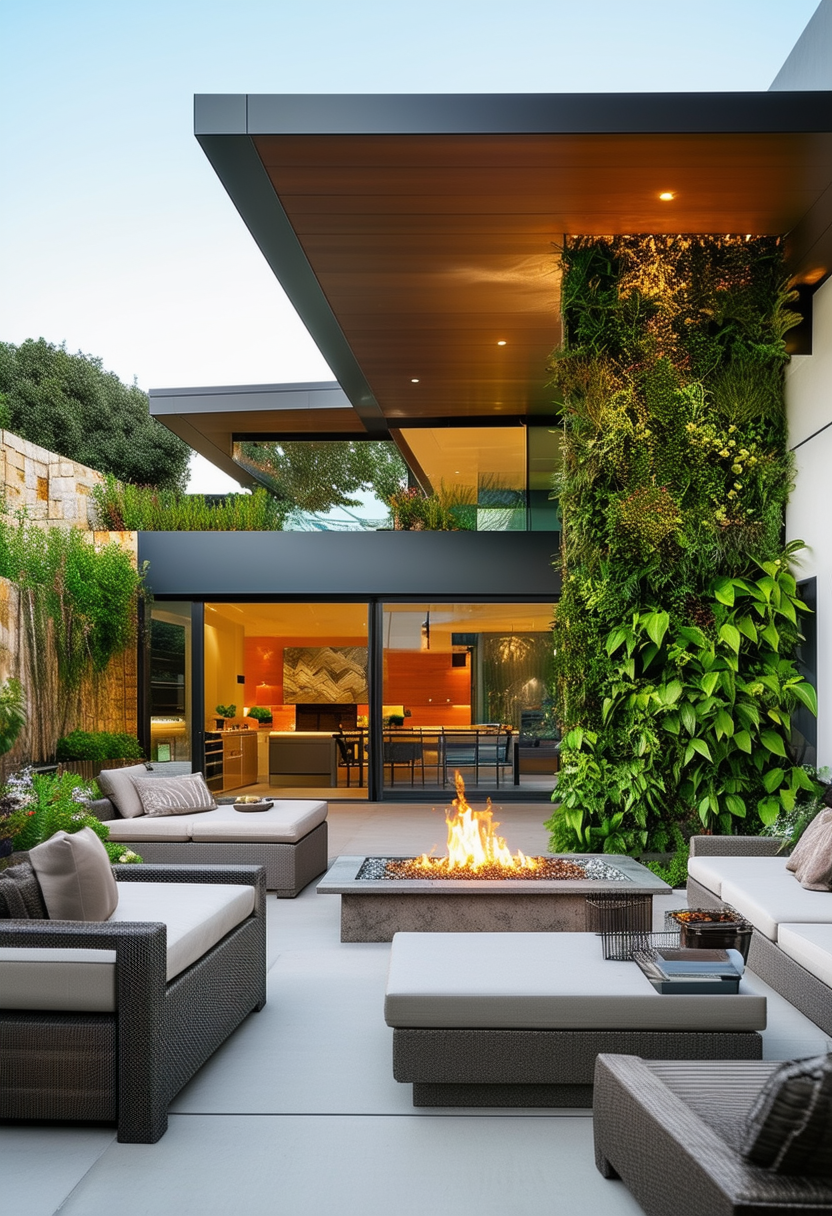Welcome to the world of sustainable living blended with stylish design! In this article, we will explore the innovative concept of eco-friendly modern shed design – a trend that is gaining popularity among homeowners who are looking to reduce their environmental footprint without compromising on style. From innovative construction materials to energy-efficient features, green style sheds offer a unique combination of functionality and aesthetics. Join us as we delve into the world of eco-conscious architecture and discover how you can incorporate this trend into your own living space.
Table of Contents
- Green Style: Eco-Friendly Modern Shed Design
- Sustainable Materials and Construction Techniques
- Energy-Efficient Features for Eco-Friendly Sheds
- Incorporating Natural Light and Ventilation
- The Importance of Proper Insulation and Thermal Performance
- Water Conservation Strategies in Shed Design
- Creating a Rainwater Harvesting System
- Green Roof Options for Shed Sustainability
- Integration of Solar Panels for Off-Grid Living
- Maximizing Space and Functionality in Eco-Friendly Sheds
- Landscaping and Exterior Design to Enhance Sustainability
- Q&A
Green Style: Eco-Friendly Modern Shed Design
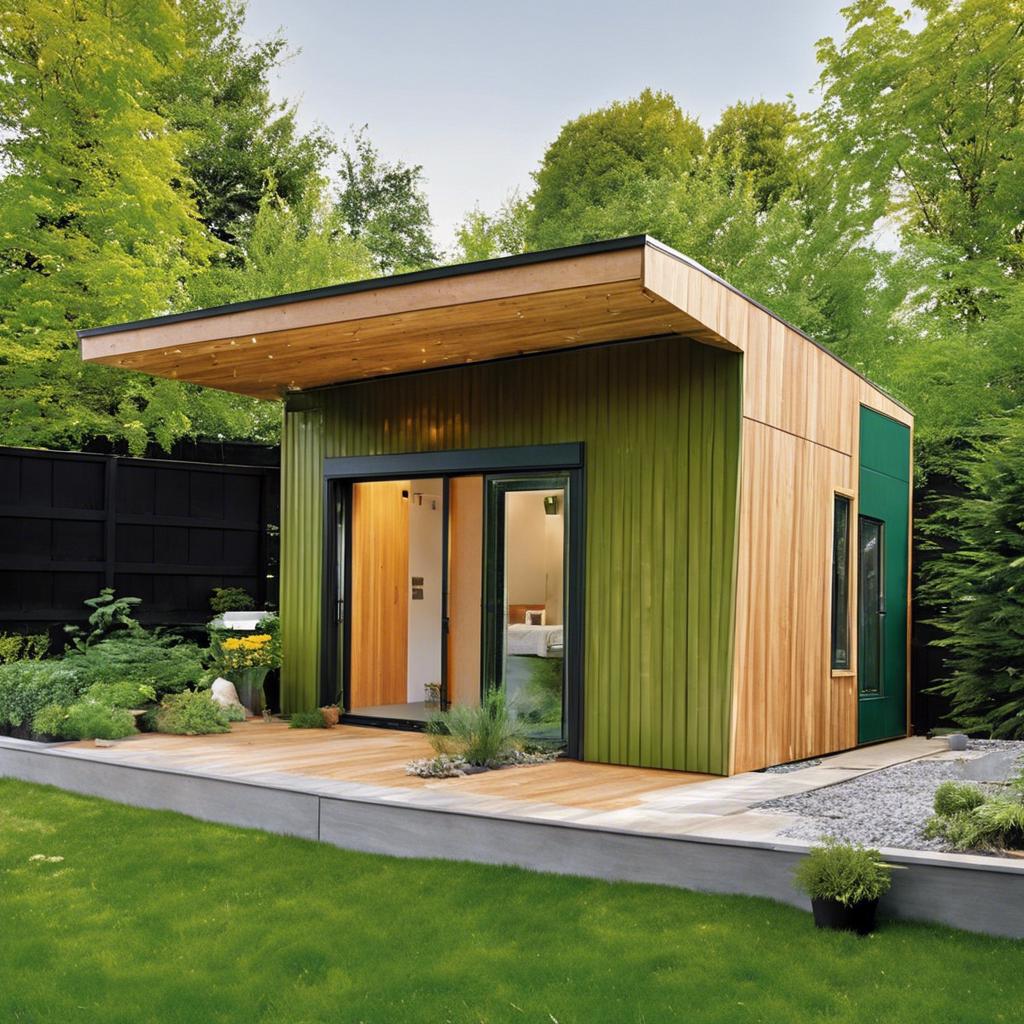
Creating an eco-friendly modern shed design is not only stylish but also beneficial for the environment. By incorporating sustainable materials and energy-efficient features, you can reduce your carbon footprint and contribute to a greener future. One key element of green style is using recycled materials such as reclaimed wood or metal for the construction of the shed. Not only does this give the shed a unique and rustic look, but it also helps to minimize waste and reduce the need for new resources.
Another important aspect of eco-friendly shed design is maximizing natural light and ventilation. By strategically placing windows and skylights, you can minimize the need for artificial lighting during the day and promote air circulation without relying on energy-consuming fans or air conditioning. Additionally, incorporating green roofs with plants can help reduce heat absorption, provide insulation, and create a habitat for local wildlife.
When it comes to the interior design of an eco-friendly shed, opt for sustainable furniture made from bamboo or recycled materials. Consider installing energy-efficient appliances and lighting fixtures to further reduce your energy consumption. To maximize space and functionality, utilize storage solutions such as vertical shelving and built-in cabinets. With a well-designed and environmentally conscious modern shed, you can enjoy a stylish and sustainable space for work, relaxation, or hobbies.
Sustainable Materials and Construction Techniques
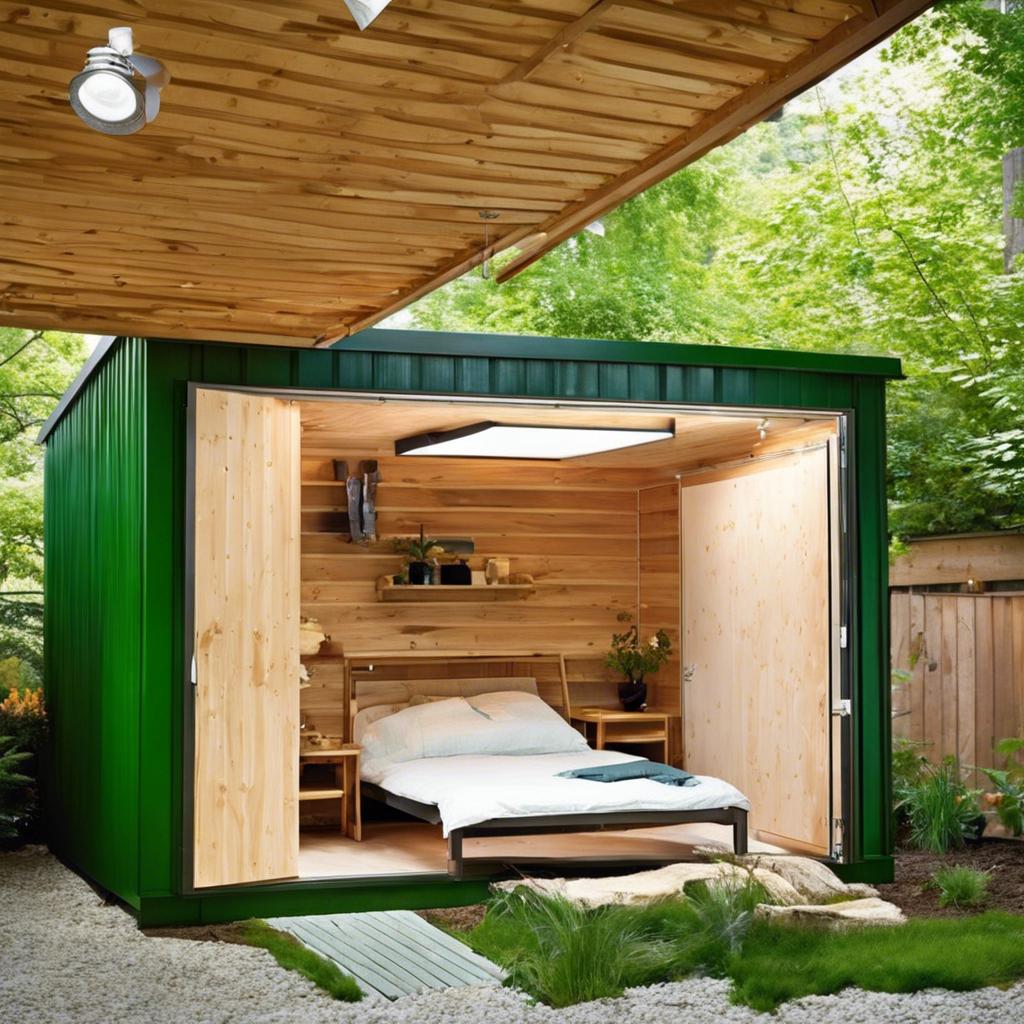
When it comes to creating a modern shed design that is both aesthetically pleasing and environmentally friendly, using is key. By incorporating eco-friendly practices into the building process, you can reduce your carbon footprint and create a space that not only looks great but also promotes sustainability.
One way to achieve a green style in your modern shed design is by using materials that are renewable and recyclable. Opt for **bamboo flooring** instead of traditional hardwood, or choose **recycled metal** for roofing materials. Utilizing **reclaimed wood** for siding can also add a unique touch to your shed while reducing the demand for new timber.
Additionally, consider implementing energy-efficient features such as **solar panels** or **rainwater harvesting systems** to further reduce your shed’s impact on the environment. By incorporating these sustainable elements into your design, you can create a modern shed that not only looks sleek and stylish but also contributes to a greener future.
Energy-Efficient Features for Eco-Friendly Sheds
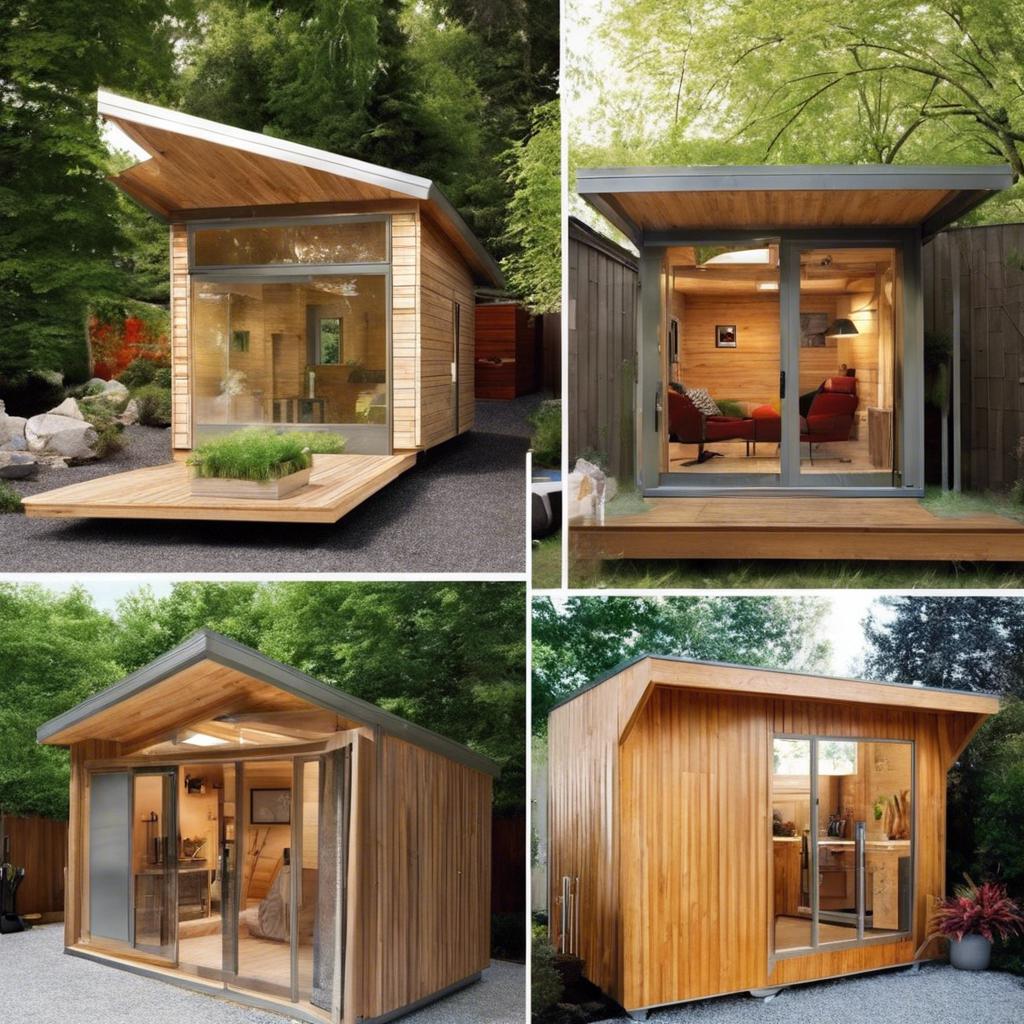
When it comes to designing a modern shed with a focus on sustainability, incorporating energy-efficient features is key. One of the most important elements to consider is insulation. By properly insulating your shed, you can reduce energy consumption for heating and cooling, keeping the interior comfortable year-round. Utilizing recycled or eco-friendly insulation materials is a great way to minimize your environmental impact.
Another essential feature for eco-friendly sheds is the use of solar panels. Harnessing the power of the sun allows you to generate clean energy to power lighting, appliances, and other electrical needs in your shed. Consider installing a solar panel system on the roof of your shed to take advantage of this renewable energy source. Additionally, incorporating energy-efficient LED lighting can further reduce your electricity usage.
Furthermore, incorporating passive design strategies can enhance the energy efficiency of your shed. By strategically placing windows and doors to maximize natural light and ventilation, you can reduce the need for artificial lighting and air conditioning. Utilizing reflective roofing materials can also help minimize heat absorption, keeping the interior of your shed cool during the warmer months.
Incorporating Natural Light and Ventilation
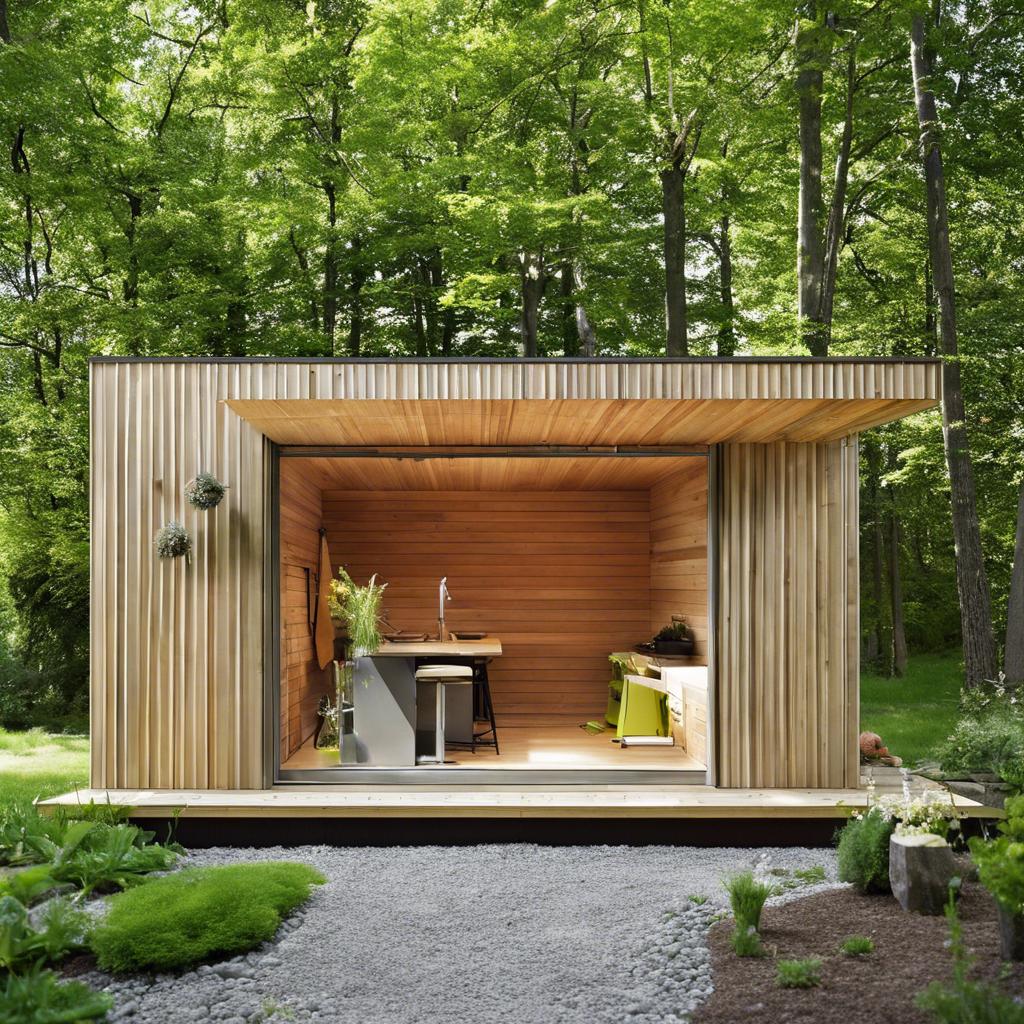
Natural light and ventilation are key elements in creating a sustainable and eco-friendly modern shed design. By incorporating large windows and skylights in the structure, you can maximize the use of daylight and reduce the need for artificial lighting during the day. This not only helps to lower energy consumption but also creates a bright and airy atmosphere inside the shed.
In addition to natural light, proper ventilation is essential for maintaining a comfortable and healthy indoor environment. Installing operable windows and vents allows for air circulation, preventing stagnation and reducing the risk of mold and mildew growth. This also helps to regulate temperature and humidity levels, making the shed more pleasant to spend time in.
When designing a modern shed with a focus on sustainability, it is important to consider the orientation of the windows and vents to maximize natural light and airflow. Strategic placement of these elements can help to optimize energy efficiency and create a harmonious relationship between the indoor and outdoor spaces. By integrating these design features, you can not only enhance the aesthetics of the shed but also contribute to a more eco-friendly lifestyle.
The Importance of Proper Insulation and Thermal Performance
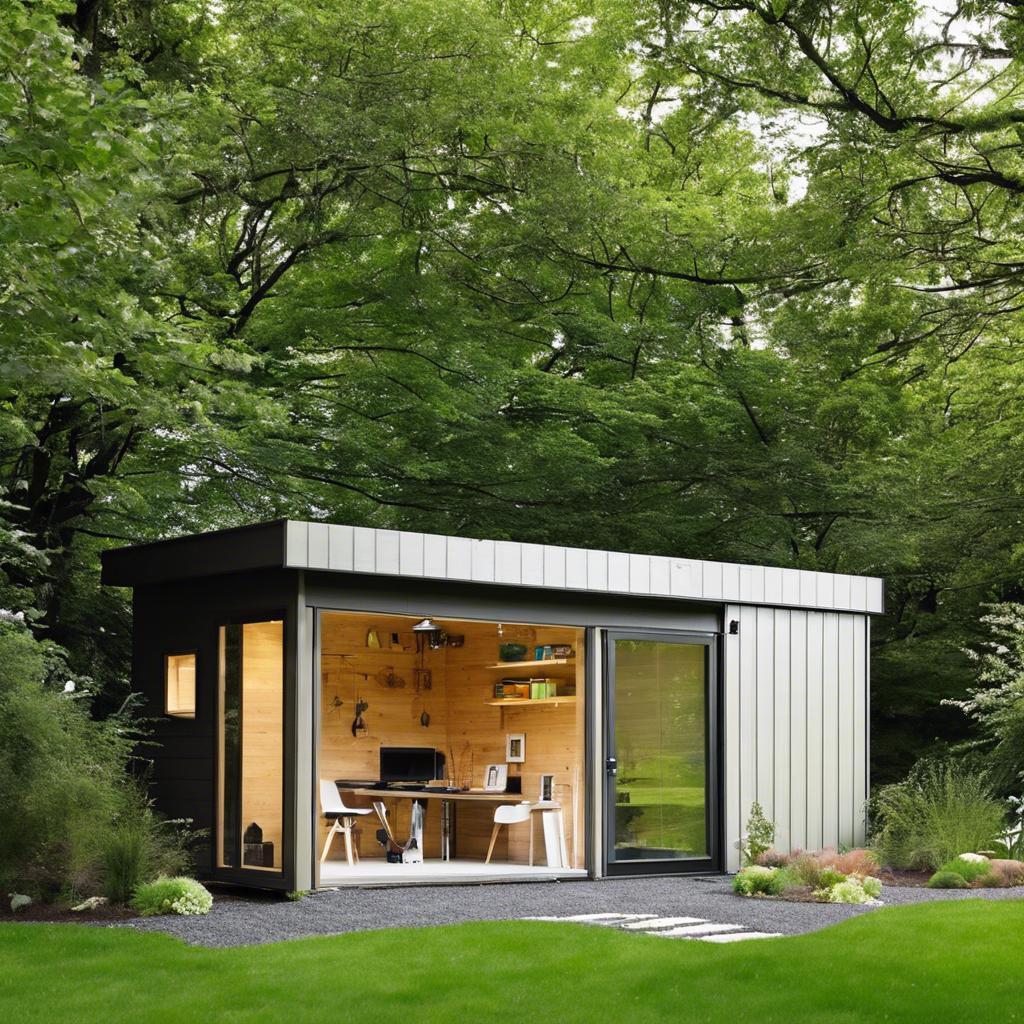
Proper insulation and thermal performance are crucial aspects of eco-friendly modern shed design. By ensuring that your shed is well-insulated, you can reduce energy consumption, lower utility bills, and create a more comfortable space for both humans and wildlife. Effective insulation also helps regulate temperature, keeping your shed cool in the summer and warm in the winter.
When designing an eco-friendly modern shed, consider using sustainable insulation materials such as recycled denim, sheep’s wool, or cellulose. These materials are not only better for the environment but also provide excellent thermal performance. Additionally, incorporating renewable energy sources like solar panels can further reduce your shed’s carbon footprint.
By prioritizing proper insulation and thermal performance in your shed design, you can contribute to a more sustainable future while enjoying the benefits of a comfortable and energy-efficient space. Make eco-conscious choices in every aspect of your shed’s construction, from materials to energy sources, and create a stylish and environmentally friendly retreat that you can be proud of.
Water Conservation Strategies in Shed Design
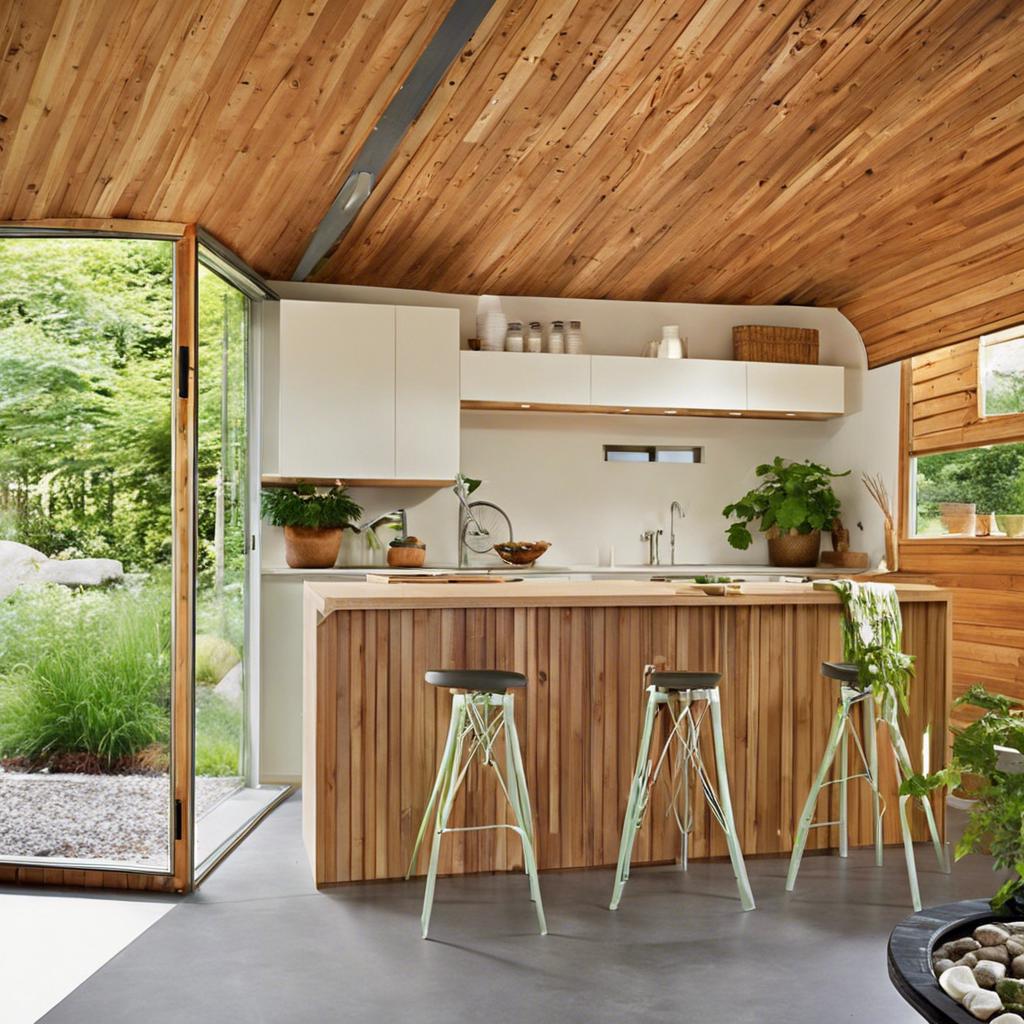
When designing a modern shed with a focus on eco-friendliness, incorporating water conservation strategies is crucial. Not only does this help reduce water waste, but it also promotes sustainability and responsible resource management. There are several innovative ways to integrate water-saving features into shed design, ensuring that every drop counts.
One effective strategy is to install a rainwater harvesting system. This system collects rainwater from the shed roof and stores it in a tank for later use. The harvested water can be used for various purposes, such as watering plants, cleaning tools, or even flushing toilets. By utilizing rainwater, you can significantly reduce your reliance on municipal water sources and decrease your environmental impact.
Another eco-friendly water conservation technique is to incorporate a greywater recycling system into the shed design. Greywater is wastewater generated from activities like handwashing, dishwashing, and showering. Instead of letting this water go to waste, it can be treated and reused for irrigation or other non-potable applications. This not only helps conserve water but also reduces the strain on sewage systems and minimizes pollution. Embracing these water-saving strategies ensures that your modern shed is not just stylish, but also environmentally sustainable.
Creating a Rainwater Harvesting System
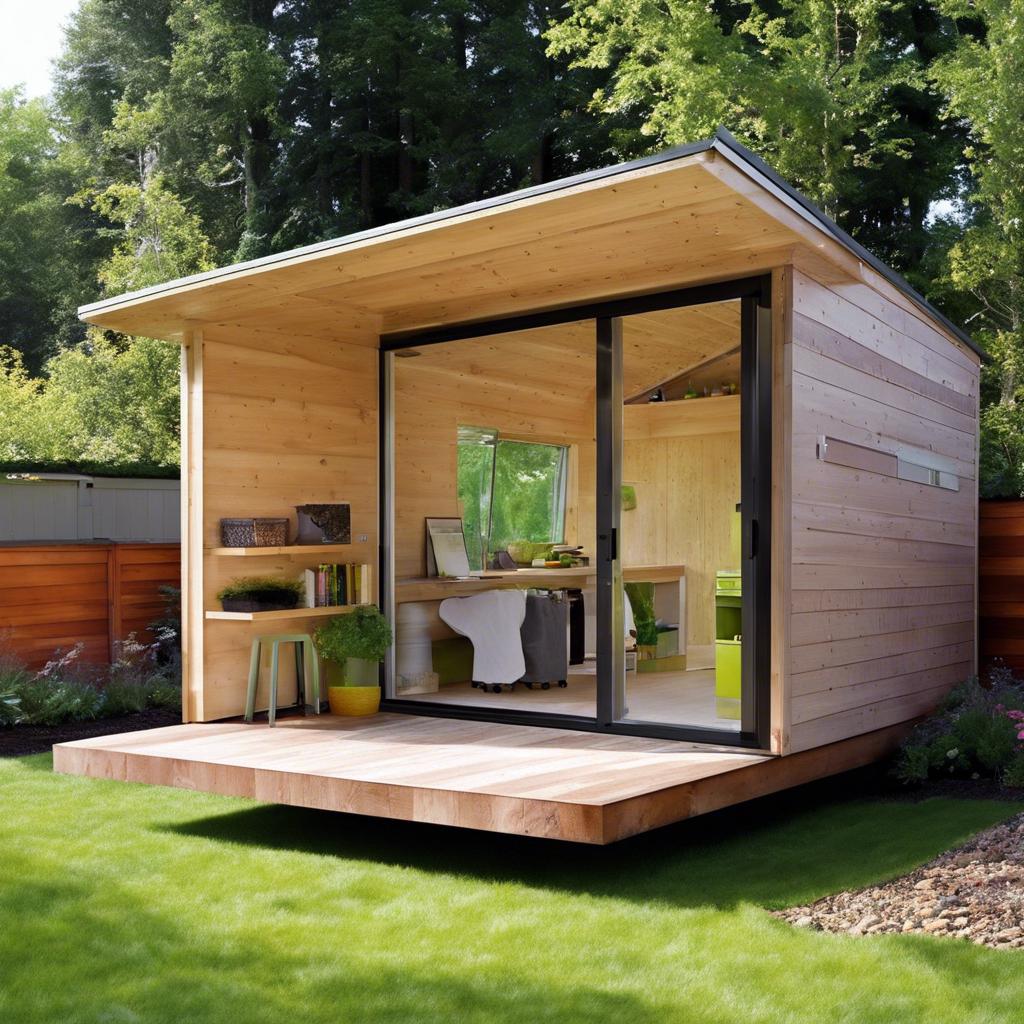
One of the most eco-friendly ways to enhance the functionality of your modern shed is by . This system allows you to collect rainwater from your shed’s roof and store it for later use, such as watering your garden or cleaning outdoor surfaces. Not only does it help conserve water, but it also reduces your utility bills and lessens the demand on local water sources.
**Here are a few tips for for your modern shed:**
- Install a gutter system along the roofline of your shed to collect rainwater.
- Direct the water flow from the gutters into a storage tank or barrel.
- Use a filtration system to remove debris and contaminants from the collected rainwater.
- Connect a hose to the storage tank for easy access to the harvested water.
| Benefits of Rainwater Harvesting System: |
|---|
| Conserves water |
| Reduces utility bills |
| Environmentally friendly |
“By implementing a rainwater harvesting system, you can significantly reduce your ecological footprint and make a positive impact on the environment.”
Green Roof Options for Shed Sustainability
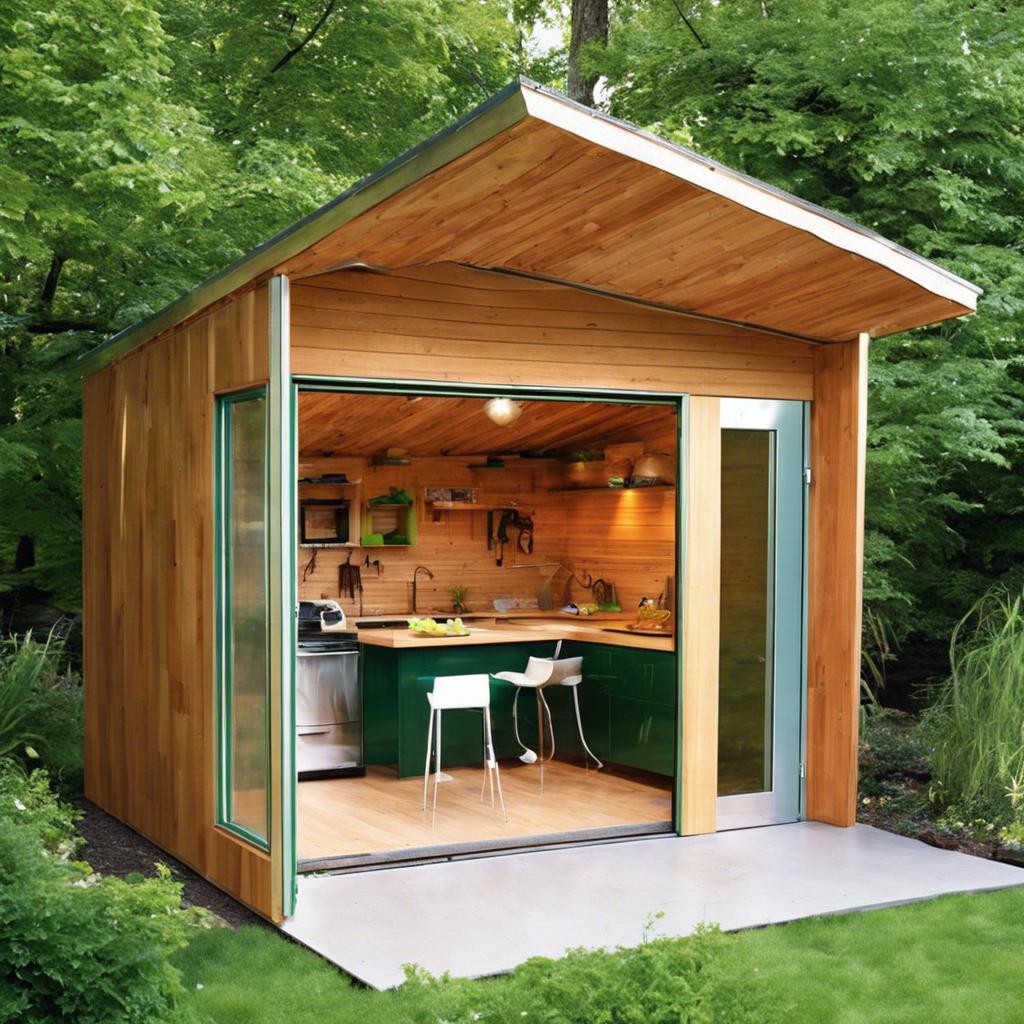
When it comes to designing a modern shed with eco-friendly features, incorporating a green roof can be a game-changer. Not only does it add a touch of nature to your shed, but it also improves the sustainability of the structure. There are several green roof options to consider, each with its own unique benefits:
- Sedum Roof: A popular choice for green roofs, sedum plants are low-maintenance and drought-resistant, making them perfect for shedding water runoff and providing insulation.
- Wildflower Roof: For a more natural and colorful look, consider planting a wildflower mix on your green roof. This option attracts pollinators and adds a vibrant touch to your shed.
- Vegetable Roof: Take your sustainability efforts to the next level by growing your own vegetables on your green roof. Not only does this option provide fresh produce, but it also helps reduce your carbon footprint.
Whether you choose a sedum, wildflower, or vegetable roof, incorporating greenery into your shed design is a stylish and environmentally-friendly way to enhance the sustainability of your space. By opting for a green roof, you can reduce energy costs, improve air quality, and create a more aesthetically pleasing environment for both yourself and the surrounding ecosystem.
“Going green with your shed design doesn’t just benefit the environment – it also adds a unique and modern touch to your outdoor space.”
Integration of Solar Panels for Off-Grid Living
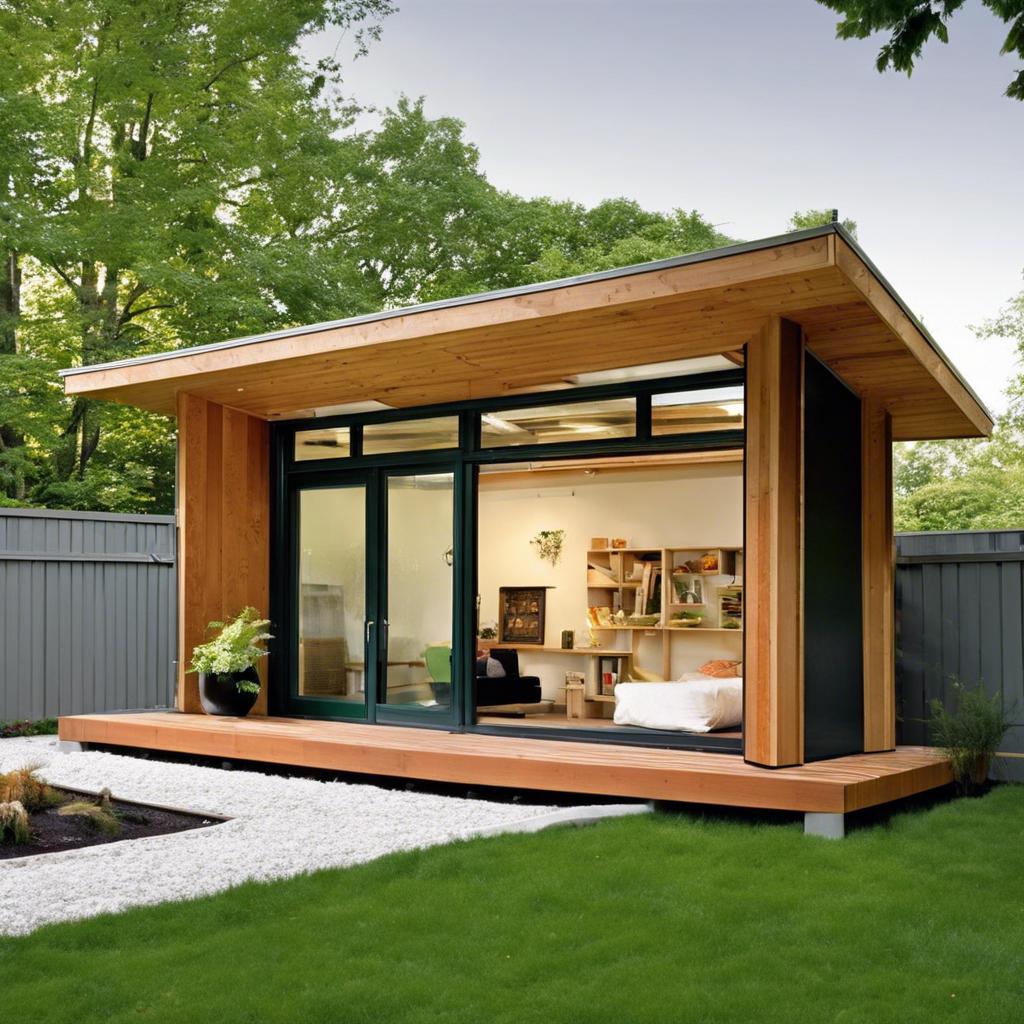
Solar panels are an essential component for off-grid living, providing renewable energy to power your home while reducing your carbon footprint. Integrating solar panels into a modern shed design is a great way to embrace eco-friendly living without sacrificing style. By utilizing the abundant power of the sun, you can create a sustainable and energy-efficient living space that is both practical and environmentally conscious.
When designing your modern shed with integrated solar panels, consider the following key elements:
- Placement: Optimize the placement of your solar panels to ensure maximum sun exposure throughout the day.
- Design: Choose sleek and modern solar panel designs that complement the aesthetic of your shed.
- Storage: Incorporate battery storage solutions to store excess energy generated by your solar panels for use during cloudy days or at night.
Embracing a green lifestyle through the integration of solar panels into your off-grid living space not only benefits the environment but also reduces your reliance on conventional energy sources. With careful planning and design, you can create a modern shed that is both stylish and environmentally friendly, setting a positive example for sustainable living.
Maximizing Space and Functionality in Eco-Friendly Sheds
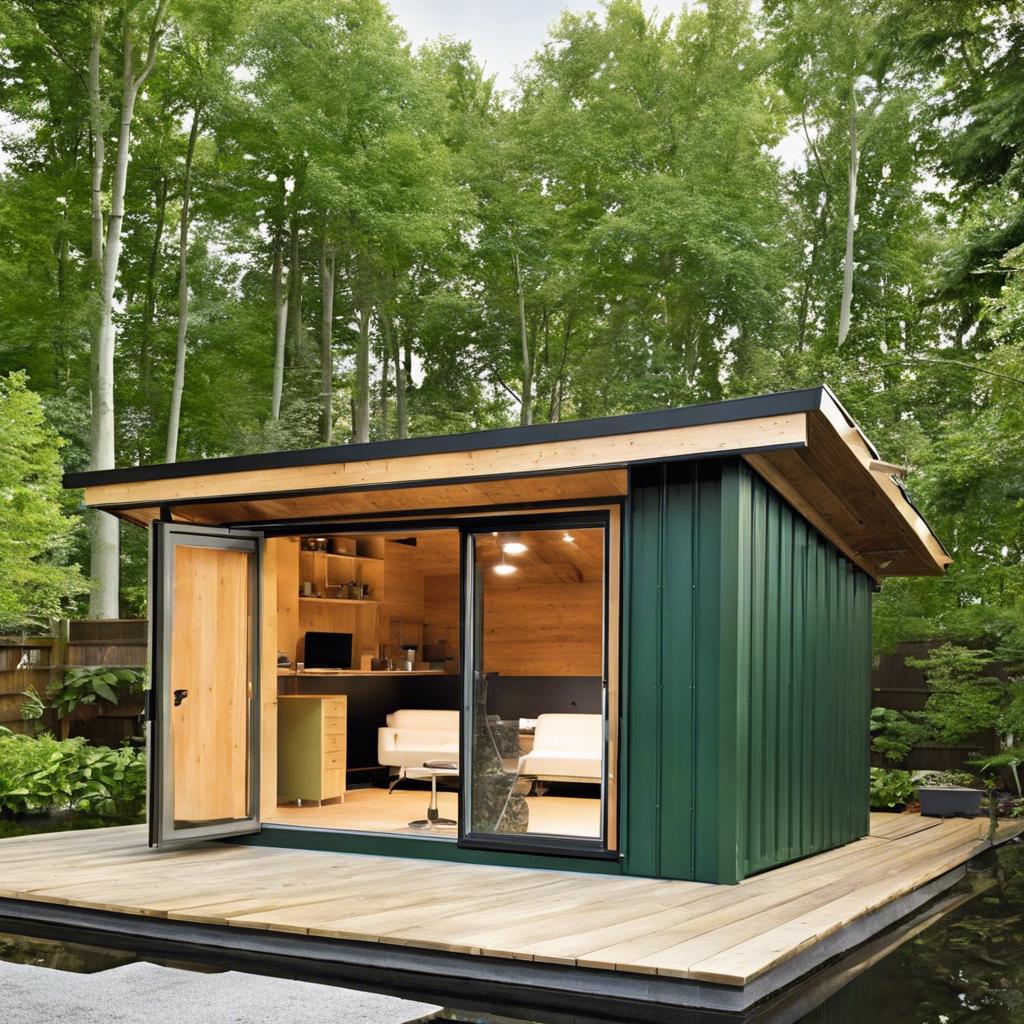
When it comes to , integrating modern design elements is key. By combining sustainability with sleek aesthetics, you can create a space that not only reduces your carbon footprint but also enhances your outdoor living experience. Incorporating eco-friendly materials such as reclaimed wood, recycled metal, and energy-efficient windows can help minimize environmental impact while maximizing style.
One way to optimize space in an eco-friendly shed is to prioritize vertical storage solutions. Utilizing wall-mounted shelves, hanging hooks, and overhead racks can help free up floor space and keep the area clutter-free. Additionally, incorporating multifunctional furniture pieces, such as fold-down tables or convertible seating, can further maximize functionality without sacrificing style.
Another strategy for creating a green and functional shed design is to prioritize natural light and ventilation. Installing large windows, skylights, and sliding doors can not only brighten up the space but also reduce the need for artificial lighting and cooling. By harnessing the power of sunlight and fresh air, you can create a sustainable and enjoyable environment for work or relaxation.
Landscaping and Exterior Design to Enhance Sustainability
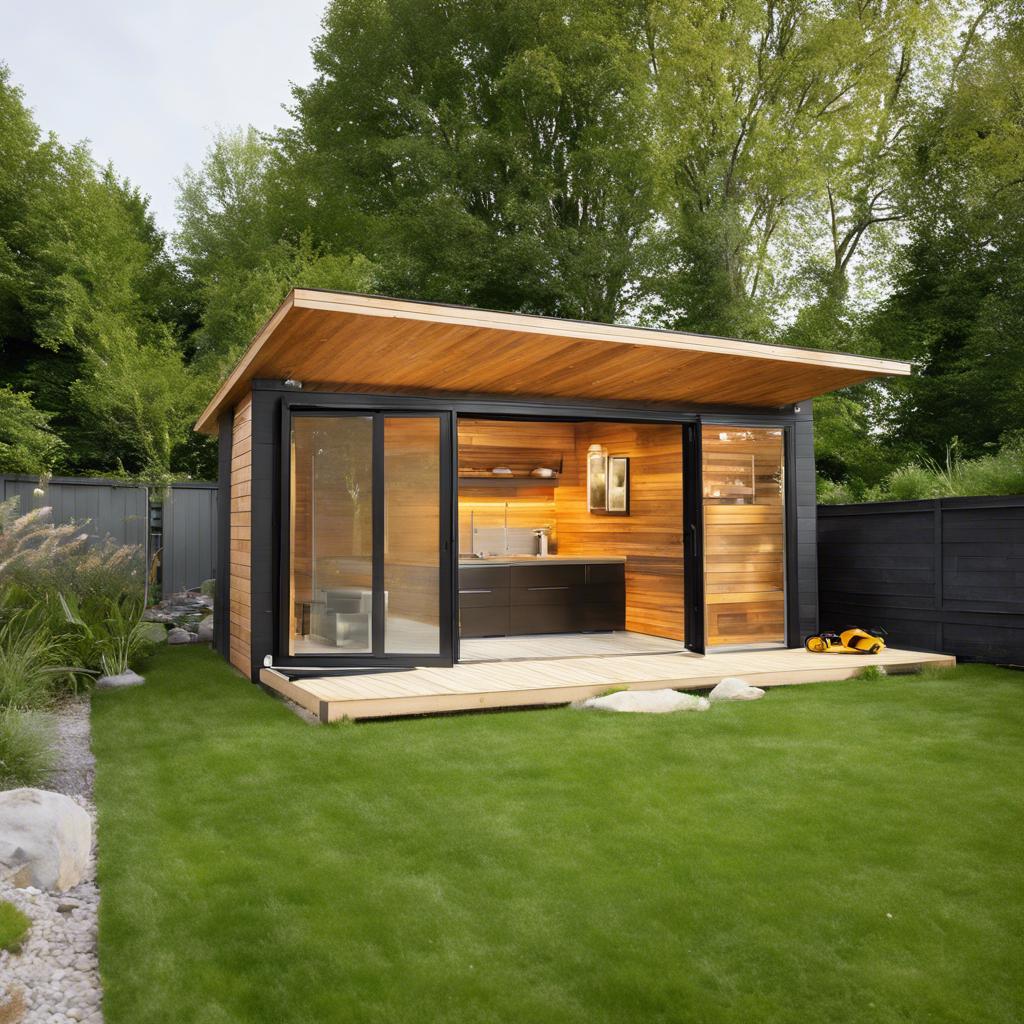
Looking to add a touch of sustainability and eco-friendliness to your outdoor space? Consider incorporating a modern shed design that not only enhances the aesthetic appeal of your landscaping but also promotes environmental conservation. With the increasing focus on green living, incorporating eco-friendly elements into your exterior design can make a significant impact on the overall sustainability of your property.
When designing a modern shed with green principles in mind, opt for materials that are renewable, recyclable, and energy-efficient. Consider using reclaimed wood, bamboo, or recycled metal for the structure, as these materials have a lower environmental footprint compared to traditional building materials. You can also incorporate large windows and skylights into the design to maximize natural light and reduce the need for artificial lighting, further minimizing energy consumption.
To enhance the sustainability of your modern shed design, consider incorporating a green roof or living wall feature. A green roof not only adds visual interest to the structure but also increases insulation and promotes biodiversity. Similarly, a living wall made of native plants can help improve air quality, regulate temperature, and attract beneficial wildlife to your outdoor space. By integrating these eco-friendly elements into your landscaping, you can create a modern shed design that not only looks stylish but also contributes to a healthier environment.
Q&A
Q: What are some key design elements of an eco-friendly modern shed?
A: Some key design elements include the use of sustainable materials such as reclaimed wood and recycled metal, energy-efficient features like solar panels, and natural lighting options like skylights.
Q: How can home owners incorporate green technology into their shed design?
A: Home owners can incorporate green technology by utilizing energy-efficient appliances, installing a rainwater harvesting system, and opting for passive solar design to maximize natural heating and cooling.
Q: What are the benefits of choosing an eco-friendly modern shed design?
A: Benefits include reducing your carbon footprint, saving money on energy bills, and creating a healthier living environment by using non-toxic materials.
Q: How can someone make their modern shed design more eco-friendly on a budget?
A: One way to make a modern shed design more eco-friendly on a budget is by upcycling materials and repurposing items from local thrift stores. Additionally, focusing on efficient use of space can help minimize waste and construction costs.
Q: Are there any trends in eco-friendly modern shed design that are particularly popular right now?
A: Some popular trends in eco-friendly modern shed design include green roofs, living walls, and smart home technology that allows for better energy management.
